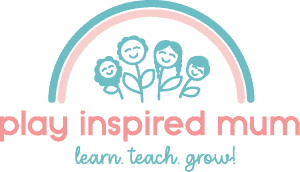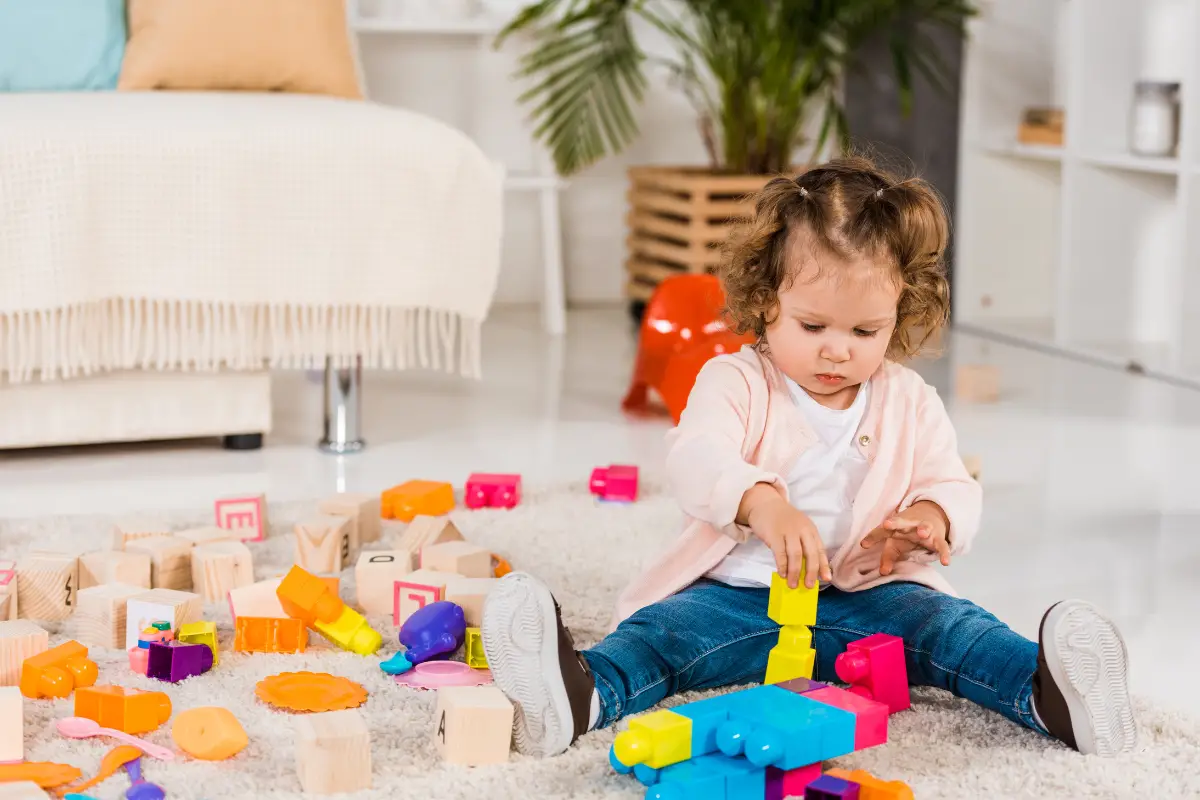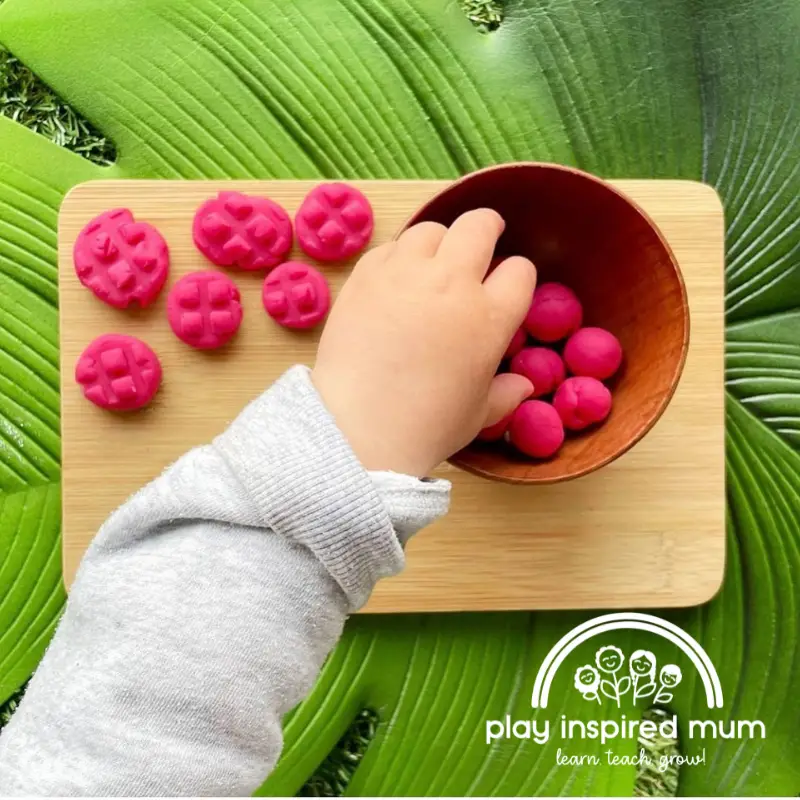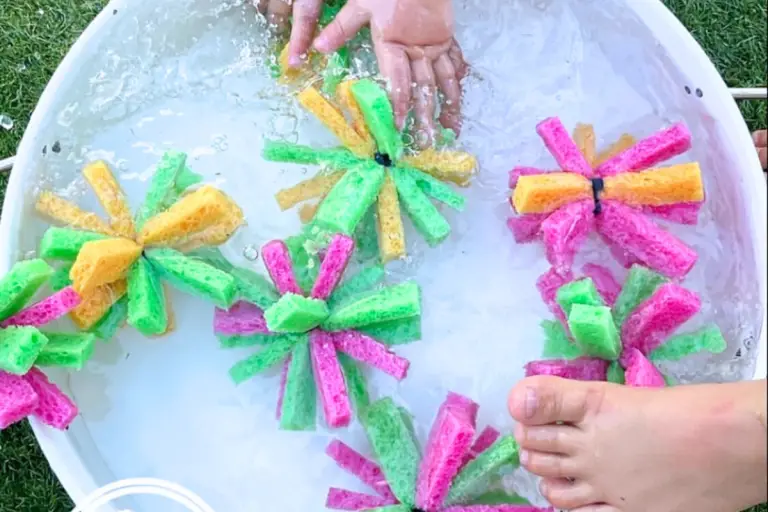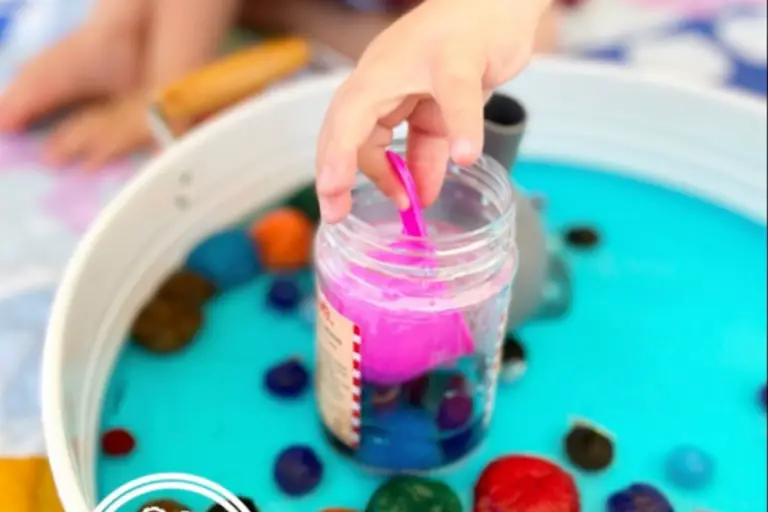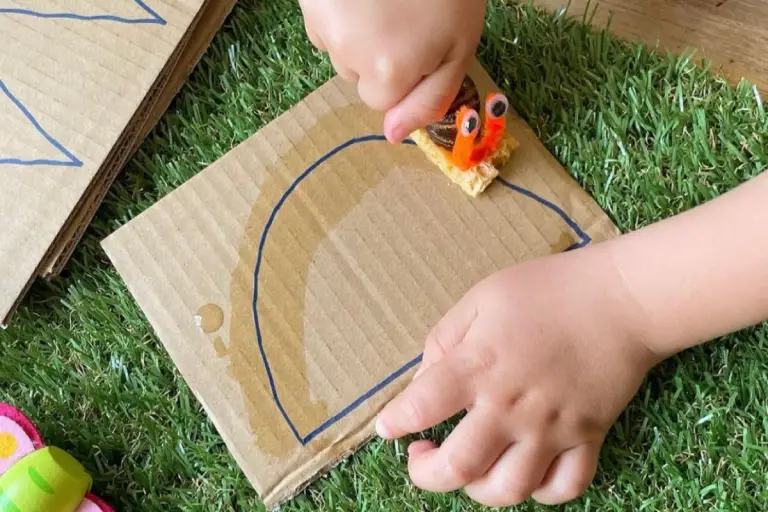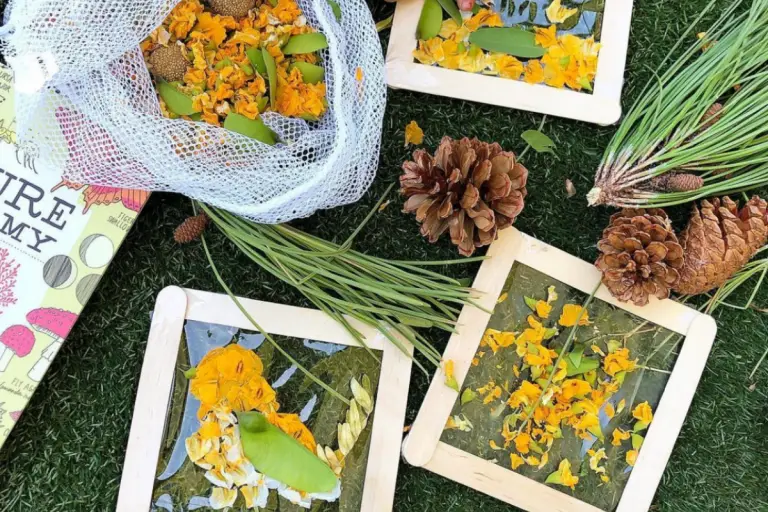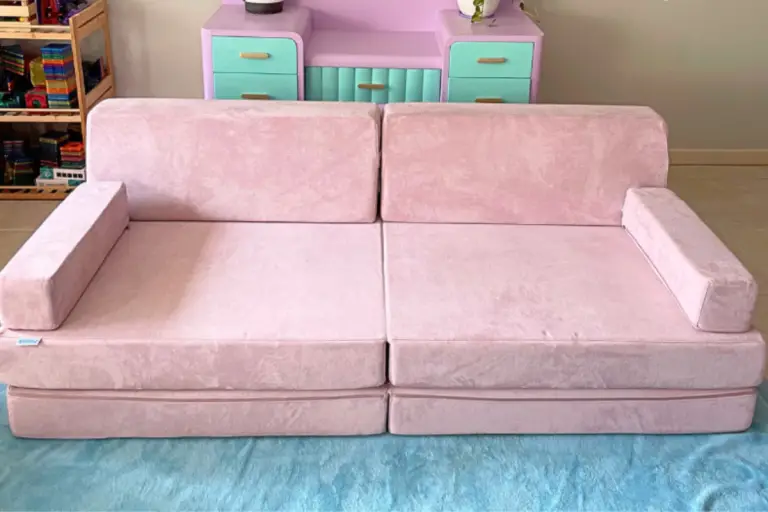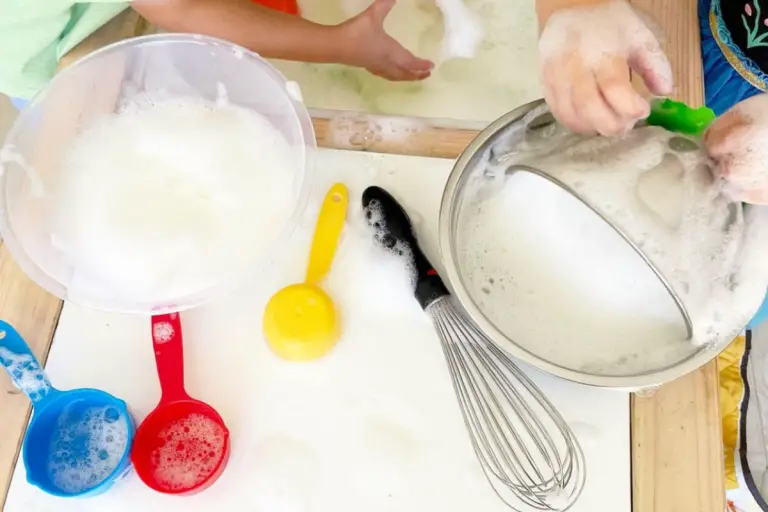Easy fun learning activities for 2 year olds toddlers
Disclosure: This blog contains affiliate links which I may earn a small commission from if you purchase through them, at no extra cost to you.
Make a stay at home day exciting with these easy fun learning activities for 2 year olds toddlers.
Simple play is how we roll and for good reason.
Us adults tend to over complicate things.
Social media can lift the bar on our own expectations on what we think we need to do when it comes to setting up toddler activity ideas.
Trust me when I say, yes Instagram is amazing for inspiration.
Trust me also when I say simple works, and in my experience the simplest of activities can be the most engaging, offer opportunities for your child to develop vital life skills and toddlers love them!
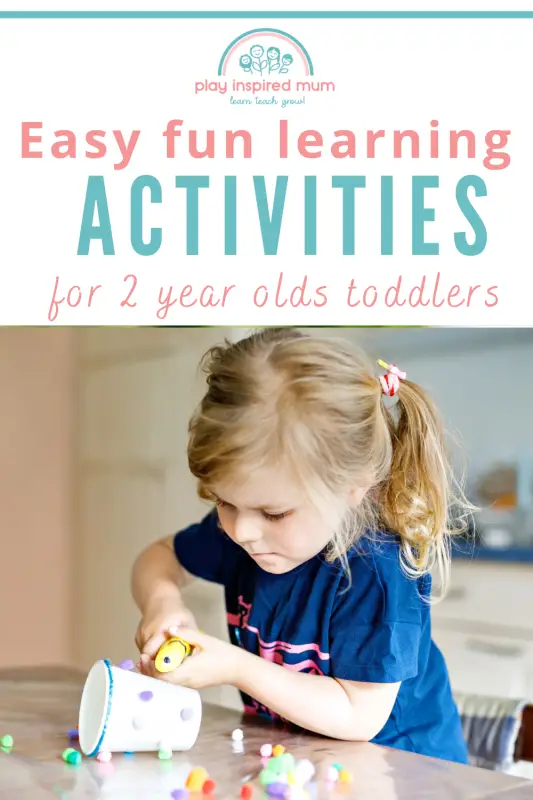
Easy fun learning activities for 2 year olds toddlers
Introduction to Toddler Fun
I discovered early on in my journey as a parent that the toddler years are a critical period for development.
It is such a magical time.
There are so many glimmers (that is those special moments that brighten up an entire day).
It was these years that would shape my child’s foundation for lifelong learning, growth, and happiness.
Toddlers, with their boundless energy and curiosity, are at a stage where their brains soak up new experiences like sponges.
To harness this incredible potential, I turned to fun learning activities with simple directions or open ended learning.
They provided the perfect platform to support and nurture this pivotal phase of development.
By focusing on the 5 C’s — Core Skills, Creativity, Curiosity, Character, and Critical Thinking — I aimed to offer my child a holistic learning experience.
These pillars of early childhood development played a significant role in shaping well-rounded individuals poised for future success.
When my first born was just a year old, I was lucky enough to meet some truly inspirational women who were passionate about meaningful learning through play.
I quickly realised that the flashy battery operated toys were not what my daughter needed.
Better yet, there were so many fun ideas that I could create using resources we already had on hand.
Understanding the 5 C’s
I have seen the transformative power of integrating the 5 C’s into toddler activities firsthand.
These essential pillars — Core Skills, Creativity, Curiosity, Character, and Critical Thinking — serve as a roadmap for fostering an environment where young minds thrive.
Core Skills lay the foundation for early learning, encompassing everything from fine motor development with play dough to language skills through interactive reading.
By diving into activities like building with blocks or mixing colors in a sensory bag, we spark Creativity, a vital component for innovative thinking.
Curiosity drives little learners to explore the world in new ways, turning ordinary moments into educational experiences.
Whether it’s a simple game of “What’s that?” in the grocery store or investigating different shapes with a puzzle, each moment feeds their inquisitive nature.
Character development strengthens as we teach empathy and problem-solving through play, shaping toddlers into thoughtful individuals.
Lastly, critical thinking emerges as we challenge them with tasks requiring reasoning, such as figuring out how to pass a small toy through a maze created from craft sticks and a cardboard box.
Safety First: Choosing the Right Activities
In the journey of exploring fun learning activities with our eager 2-year-olds, one priority stands above all: safety.
It falls on us to pick activities that not only captivate their little minds but also safeguard their well-being.
Supervision is not just a safety net; it’s a bridge that connects us to their learning experiences, ensuring they extract maximum benefit without any risk.
Through thoughtful selection, we ensure that these activities cater to their developing motor skills, whether fine or gross, and stimulate their sensory development in secure, controlled environments.
With each activity – be it a sensory bin filled with soapy water and different colours of pom poms, or a pretend play setup using a cardboard box transformed into a grocery store, we are responsible for checking that all pieces are large enough to avoid choking hazards, that materials used are non-toxic, and settings are free from sharp edges or unsafe heights.
These measures embolden us to provide a rich learning atmosphere where our toddlers can thrive without bounds.
Mini-Tangram Puzzle
I discovered a fantastic way to enhance problem-solving and fine motor skills in toddlers – crafting mini-tangram puzzles.
These simple games introduce small hands to the world of shapes and spatial awareness.
Initially, you might wonder if your eager toddler can manage such a task.
Yet, patience and guidance go a long way.
Start by choosing brightly coloured cardstock; the variety sparks interest and aids in distinguishing different shapes.
Next, cut the card into basic shapes: squares, triangles, and rectangles.
These shapes form the foundation of our puzzle pieces.
Once you have your shapes ready, introduce them to your toddler.
Show how these pieces can fit together to make new shapes or pictures.
It’s not just about putting pieces together; it’s a fun activity that encourages your little one to think critically.
They will twist and turn pieces, figuring out where each belongs.
This process not only captivates their attention but also refines their fine motor skills as they grasp and position each piece with their tiny fingers.
Add an extra sensory element by wrapping the pieces in aluminium foil like little gifts to be unwrapped!
Crazy Costumes for Pretend Play
I discovered that engaging toddlers in crazy costumes for pretend play worked wonders.
They dove into a world of imagination, dressing up in different colors and textures.
Pom poms, cardboard boxes, and craft supplies became treasures for their innovative attire.
My kids love getting into my wardrobe, scarves and getting dressed up in my clothes.
This fun way of playing wasn’t just about giggles; it fostered their creativity in new ways.
They experimented with various roles, from astronauts to zookeepers, each costume sparking a different adventure.
Through this imaginative play, toddlers not only unleashed their creativity but also honed their language skills.
They narrated their adventures, expanding their vocabulary and practicing new phrases.
This act of storytelling boosted their confidence in expressing themselves.
Moreover, pretend play offered a unique opportunity for toddlers to develop their social skills.
They learned to share ideas, negotiate roles, and cooperate to bring their imaginative worlds to life.
This great activity proved to be a fantastic method for nurturing their development in a joyful, unstructured environment.
Sensory Fun with Play Dough
I have often found that play dough stands as a vibrant canvas for little hands eager to mold their worlds.
It beckons as a multifaceted tool, enhancing fine motor skills through the tactile engagement it invites.
Each press, roll, and shape crafted by tiny fingers not only lays the groundwork for creative thought but also fortifies the dexterity needed for more complex tasks ahead.
Imagine transforming a simple ball of dough into a session of sensory play that not only captivates but educates.
I weave in lessons on colours and shapes, creating a fun way for my child to explore new concepts.
By integrating cookie cutters and makeshift tools, such as potato mashers and rolling pins, every moment becomes a celebration of discovery.
Sensory activities like these stretch beyond mere amusement; they act as bridges to intricate worlds of learning.
Through the squish and squash, toddlers grasp the essence of cause and effect, seeing firsthand how their actions reshape their immediate surroundings.
Play dough is amazing for developing fine motor skills too. Every squash and squeeze results in tiny muscles getting stronger.
This, in turn, nurtures both their cognitive development and sensory development, setting a foundation as enriched as it is delightful.
Building Blocks of Creativity
I had observed little hands constructing towers and bridges with colourful building blocks.
This simple game had unfolded as a great activity for their blossoming minds.
Building blocks, those foundational toys nestled in playrooms across the globe, served as more than just playthings.
They became tools to ignite imagination and foster critical thinking.
As each piece clicked into place, I saw problem-solving skills taking shape.
Deciding which block would fit or how to balance a beam involved a series of trial and error experiences.
These moments were crucial for cognitive development and offered a playful way to understand concepts such as gravity and spatial relationships.
A simple tower constructed from building blocks was not just a structure to admire; it represented a set of decisions, experiments, and learning moments.
The best activities were those that engaged multiple senses and allowed for open-ended play.
Building blocks did just that.
They encouraged toddlers to use their imagination, turning abstract ideas into tangible realities.
Whether they were crafting a make-believe grocery store or a castle from a far-off land, these blocks became the foundation for creative storytelling and role play, enhancing their social skills and language development.
Mixing Colours: A Sensory Bag Adventure
I found myself exploring different ways to engage little learners, and discovered the sensory bag adventure.
This easy activity proved to be a fun way to introduce my toddler to different colours and textures.
We started making these colour changing sensory bags when they were babies.
The ziplock bags made for a safe way for them to explore different sensory elements without the risk of them getting too messy.
By filling plastic bags with shaving cream and a few drops of food colouring, we jumped into a world of sensory play.
The touch and feel of the bags captivated their attention.
As we pressed and squished, the merging colors fascinated them.
Creating the sensory bag was not just an educational activity, it was a bonding experience.
It served as a great activity for rainy days, transforming our indoor activities into a colourful exploration.
The blend of colours in a single bag, from blue to green, yellow to orange, was like magic in their eyes.
It was much fun, reminding me again that the best things for 1-3 year olds often come in simple packages.
Embracing fun learning activities like this not only sparks their sensory development but carves a path for a love of learning.
Tape Brings Play Together
I love using tape in our play. There are so many different ways to use masking tape, packing tape, electrical tape and duct tape in play.
Activities such as sticky walls and crafts can feed your child’s senses by teaming the tap up with nature items.
Create a body outline with masking tape or sidewalk chalk to discuss body parts that can be filled in with blocks or shapes cut from a piece of paper.
Build obstacle courses with a tape line balance beam, stepping marks, jumping sections and animal transitions.
Practice sorting by attributes with an animal tape line up.
Make a race track, colour sorting squares and garage for toy cars.
When setting up these activities your children in a younger age group, my older children have always been curious and joined in too.
Posting Their Way to Success
Ever lost your keys, or remote only to find that your toddler had stashed them?
Toddlers love posting and there are so many great opportunities for development through these simple activities for 2-3 year olds.
We have set up… well I can’t even tell you how many posting activities over the years. More often than not they are as simple as a muffin tin, ice cube tray cardboard box or egg carton teamed ups with some pom poms, small toys or pop sticks. The prince is the same each time however simple variations keep these simple posting activities exciting.
Use some acrylic paint to colour the wells in the bottom of an egg carton to turn it into a colour matching activity with some coloured pom poms.
Flip an egg carton upside down, make some small cuts in the wells and presto, time to poke some popsicle sticks into the holes.
Pipe cleaners can be paired up with a collander and scarves can be teamed up with a tissue box.
It’s the simple things, I tell you.
And the whole time your toddler will be exploring cause and effect principles, developing fine motor skills and refining their hand eye coordination.
Baking Up Learning with Colourful Cookies
I am a huge advocate for practical life skills to blur into fun activities.
Making cookies wasn’t just much fun; it blossomed into a great activity for teaching them about measuring, different shapes and colours.
I used cookie cutters of various forms to turn this into an insightful lesson.
My little learner grasped the concept of shapes while pressing the cutter into the dough.
We then counted the cookies together, embedding the basics of numbers.
Adding sprinkles, sesame seeds and poppy seeds to the cookie dough presented another opportunity.
It turned into a fun way to introduce my busy toddler to a spectrum of colours.
As we mixed the colours, their excitement was palpable, making it a memorable educational activity.
Different colours led to discussions and reinforced their understanding of the world around them.
This simple game of baking thus proved effective for enhancing both their language skills and sensory development.
Following directions became an integral part of the process, from stirring the dough with a wooden spoon, measuring ingredients, to waiting for the cookies to bake.
This activity, in essence, laid the foundation for critical thinking and following instructions in a joy-filled setting.
Thread Skills Together
Threading activates are not only easy to set up, toddlers love them.
Start off with larger ‘holes’ being threads onto rigid vessels and then as their skills become more developed, add the challenge of smaller holes.
Cut a toilet paper roll or pool noodle in to sections and thread them onto sticks or branches from the garden.
Colour some pasta and thread them onto pipe cleaners to make some fun jewellery as a gift for a loved one.
These activities may come across as basic however I can guarantee you that are paving a solid foundation for far more complex tasks later in life.
It’s like the old iceberg analogy, what you see above the surface is minor compared to what is going on underneath the waves.
Threading involves the development and refinement of many skills including fine motor skills, crossing the midline, bilateral coordination skills, hand eye coordination skills, critical thinking, problem solving, and sequencing events.
We see a toddler sliding a cardboard ring onto a branch however by providing these resources in your play environment, you are gifting them an opportunity to learn through everyday play.
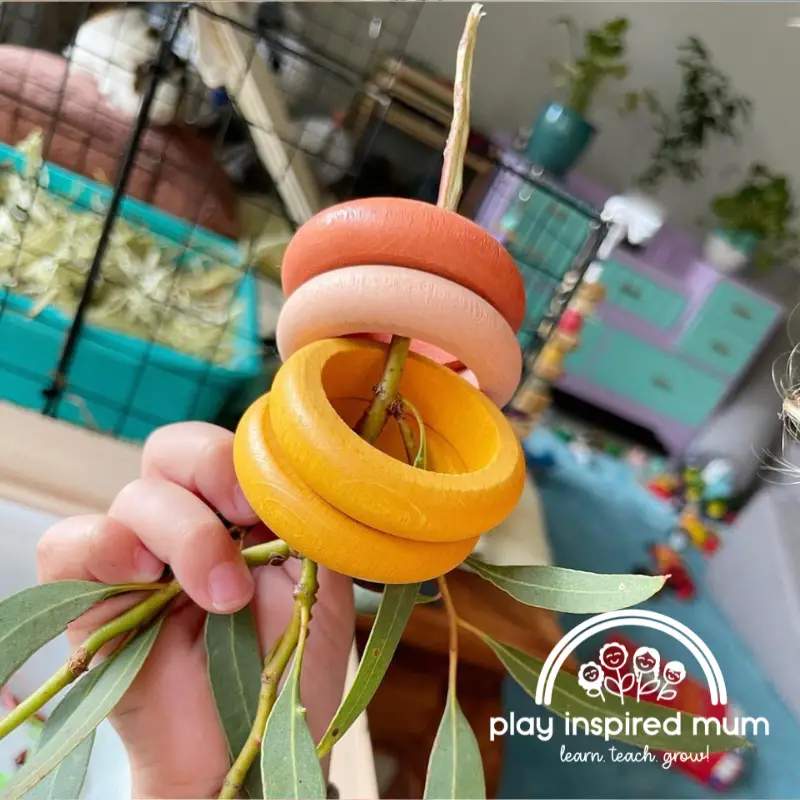
Grow a Seed, Grow a Mind
I have discovered that engaging little learners in outdoor activities, especially those that involve getting their hands dirty, ignites a sense of wonder and responsibility.
Planting a seed together proves to be an easy activity and a great way to start.
It’s an opportunity for toddlers to learn about the circle of life through a hands-on experience.
First, we’ll gather a small pot, some soil, a seed – perhaps a sunflower or a bean for quick germination – and a little water.
- Step One: I guide my eager toddler’s small hands in filling the pot with soil, leaving just enough room at the top for the seed.
- Step Two: We make a small hole in the center of the soil with a finger or a wooden spoon, showcasing how every detail matters in the process.
- Step Three: Together, we carefully place the seed into the hole and cover it gently with soil. This act teaches patience and the delicate balance nature requires.
- Step Four: We water the seed slightly, using a sprinkling technique to ensure it’s moist but not overwatered, emphasizing the importance of moderation.
- Step Five: Finding the perfect spot in our home that receives ample sunlight becomes our next adventure. It teaches the toddler about the sun’s role in growth.
Throughout this activity, I’ve noticed my toddler’s excitement in checking on the plant’s progress daily.
It becomes a shared responsibility, fostering a bond between us.
They learn that care and attention could eventually lead to the joy of seeing the first sprout emerge, marking the beginning of their understanding of responsibility and the basic principles of science.
It’s one of the best activities that maintain a toddler’s curiosity and helps them grasp the concept of cause and effect in an enjoyable and memorable way.
Sprouting an apple seed
Last spring Mr 2 was fascinated by apple seeds.
We collected them from the cores and placed them in a container wrapped in damp paper towel in the fridge until they sprouted.
Once sprouted we planted them in repurposed strawberry containers. Within a week tiny little plants grew and Mr 2 was ecstatic!
Im telling you, it’s the simple things.
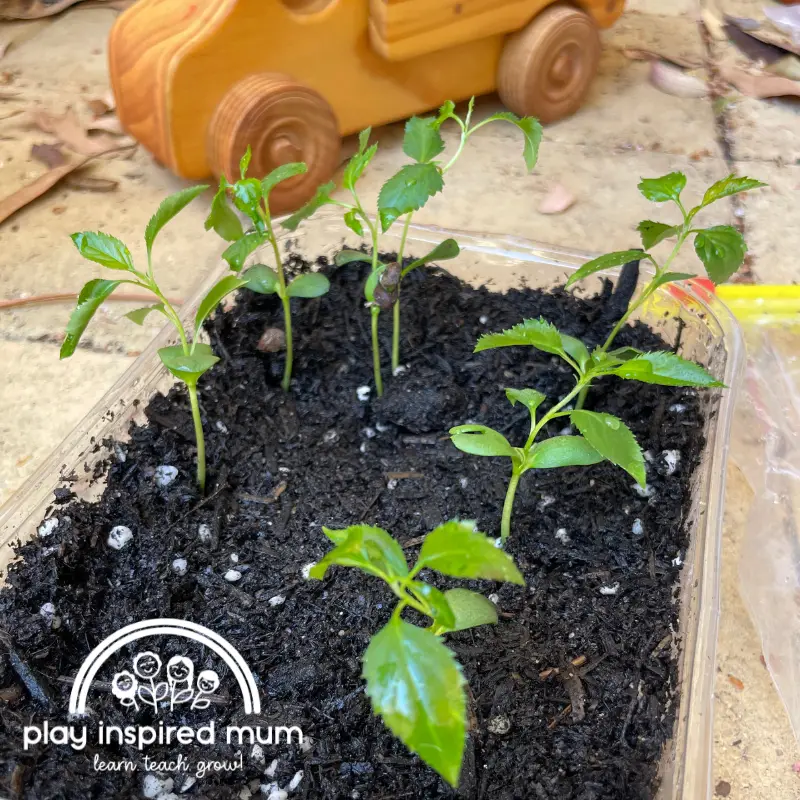
Crafting Your Own Puzzles
DIY puzzles are so easy to make and all three of my children have loved making them.
First, I selected a colourful page from a magazine or printable and glued it onto a piece of cardboard.
Once the glue had dried, using a sharp pair of scissors, I cut out different shapes.
This craft allowed us to explore both hand-eye coordination and critical thinking skills together.
Our little learner was intrigued by the challenge.
Each shape offered a new way to think about how parts form a whole.
This activity morphed into a fun game, teaching us that the best activities often come from the simplest ideas.
We talked about the colours and objects in the picture, enhancing my child’s language skills in a natural, engaging way.
Creating our own puzzles became our favorite activity on rainy days.
It proved that with a little creativity, everyday items like cardboard boxes, a sheet of paper, and some craft supplies could transform into educational tools.
Paint sticks are amazing on cardboard from cereal boxes for making DIY puzzles. They colour payout is incredible and they dry so fast!
This process not only entertained us but also strengthened our bond, showcasing how much fun learning can be.
Creative Ideas for Rainy Days
Rainy days offer a unique chance for creativity and fun within the comfort of our homes.
With a mix of sensory activities, educational games, and simple craft projects, you can turn a gloomy day into an exciting learning adventure for your little one.
Crafting your own puzzles out of old magazines or cardboard boxes will not only keep their little hands busy but also boost their problem-solving skills.
Build a garage or hotel for animals by stacking toilet paper rolls within a cardboard box.
A homemade sensory bin filled with rice, pom poms, ice cubes or even soapy water adds an element of discovery and sensory development.
For younger toddlers make themed sensory bottles, use a cookie sheet as a water table or a sensory path with some bubble wrap.
Perhaps, involving them in a baking project using cookie cutters in different shapes introduces basic math concepts in a fun way.
Use positional language while placing the cookies onto the cookie sheet.
These indoor activities are not just about passing the time; they are gateways to enriching a toddler’s development across various domains.

A World Full of Fun and Learning Awaits
I have watched the faces of little kids light up with joy and curiosity as they dive into new activities.
It’s not just entertainment; it’s a journey into the vast expanse of their mind.
A simple week of toddler activities can lay the foundation for a love of learning that stretches far beyond these early years.
A child’s development doesn’t pause for a moment’s notice; it thrives on the stimulation and challenges these fun learning activities provide.
By integrating play dough, sensory bins, and building blocks into our days, we cater to the development of fine and gross motor skills.
These aren’t just fun activities; they are gateways to problem-solving skills and hand-eye coordination.
Our little learners embark on adventures through colours, shapes, and the basics of critical thinking with every game we play.
Engaging in pretend play with costumes or exploring the outdoors instills a sense of curiosity and enhances social and language skills.
So, here’s to creating a home that’s a playground of possibilities.
We create not just a safe space for growth but a nurturing environment that champions educational activities.
Let us dive into this rich array of sensory activities, indoor and outdoor explorations, with an eagerness to learn at every turn.
I hope you can use this list of easy toddler activities to bring fun to your home.
The best things in life are learned through joy, laughter, and the tender moments we share with our children, fostering a love for discovery in these formative years.
